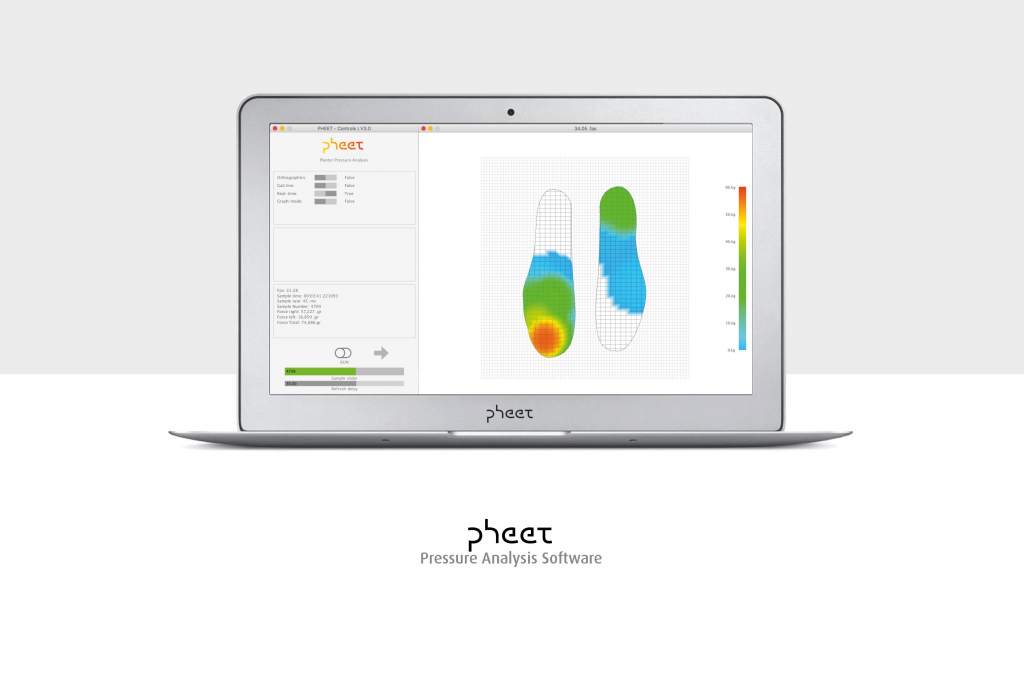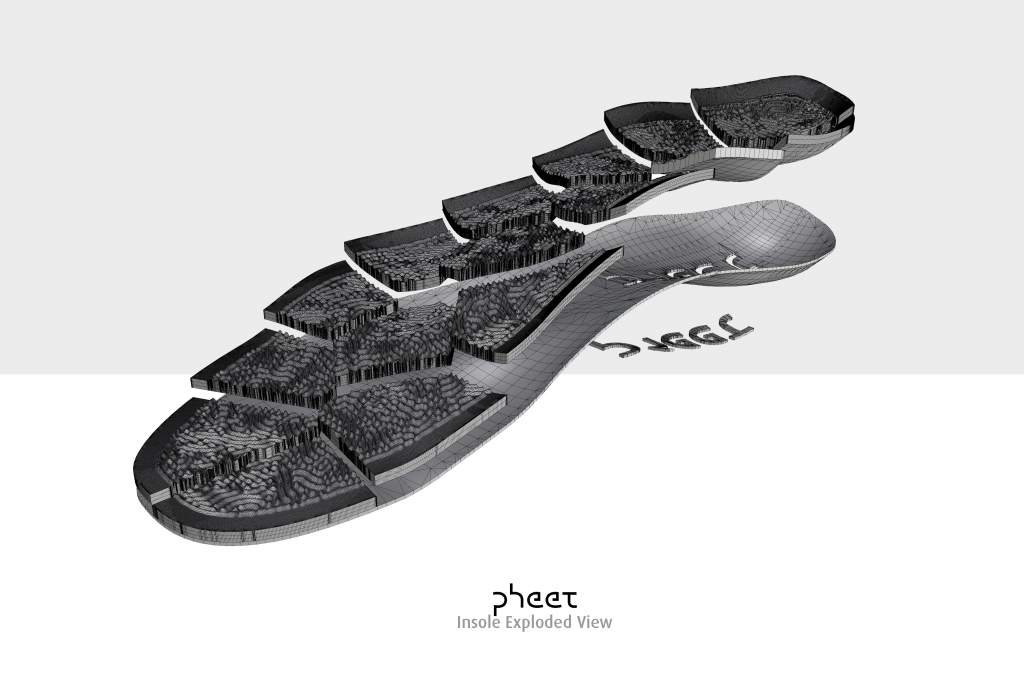Prosthetics and orthotics are moving in leaps and bounds, in large part due to 3D printing. Companies like Open Bionics are creating fast, affordable alternatives to expensive prosthetics, while also creating limbs inspired by video games. There are 3D feet scanners, medical grade printers specifically designed for orthotics and prosthetics, and even designer prosthetics.
Designer Charles Fried is adding to this amazing list of innovations, striving to make the process of creating custom orthotics that much simpler. PHEET, a research project that Fried undertook for his thesis at the University College London, investigates the combination of pressure mapping with multi-material 3D printing.
At the moment, getting foot orthotics is a lengthy and invasive process. Pheet is looking to overcome these issues by proposing an approach that will bridge the diagnosis and manufacturing processes. It does this by building a pressure sensitive insole for the collection of dynamic data and software for analysis.

A close-coupling between the pressure data and geometric data is then created by combining the two systems. The latter is used for manufacture in order to leverage the state-of-the-art multi-material rapid prototyping technology (Stratasys Connex 500). It is quick and non-invasive for the patient, and will enable reduction in subjectivity within diagnosis by quantifying foot features.

The pressure data will hold all the information needed on the biomechanics of the patient, which can be analysed. The results, along with a 3D scan and any specific customer requirements (such as pain points) are then used to create the final product. Various materials can be selected, and along with the varying structures, it makes the orthotics truly custom.
While it is still in the prototyping stage, the project looks very promising and we can’t wait to see where it goes. You can see Charles Fried’s other projects here.
Feature image: Charles Fried



